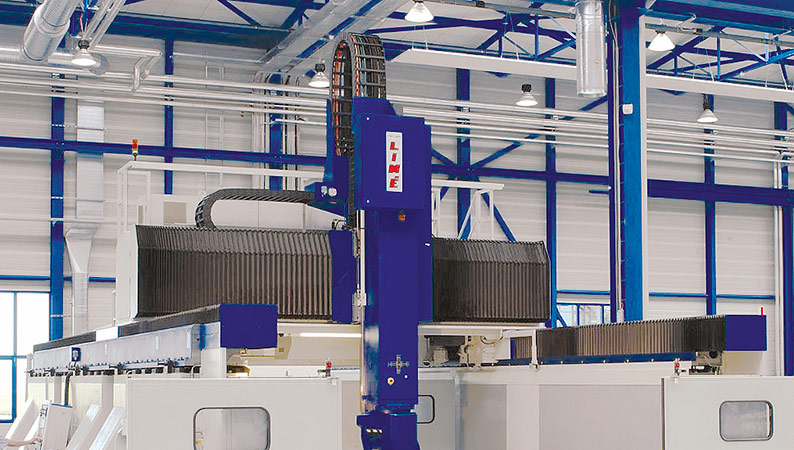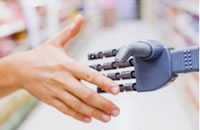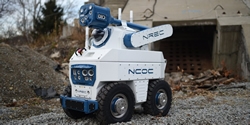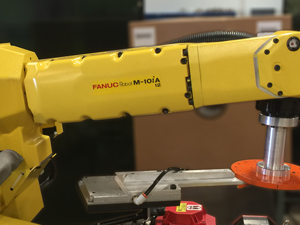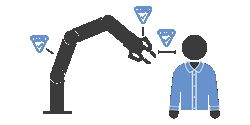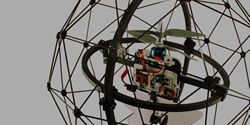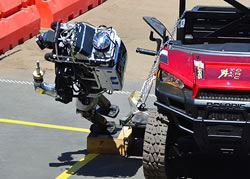Machine Covers & Way Protection
The close proximity of moving parts often excludes the feasibility of static protective enclosures. The machine tool may create an environment in which its parts must be protected from its work processes, yet need to move without obstruction.
Robots: Legal Affairs Committee calls for EU-wide rules
EU Parliament News: EU rules for the fast-evolving field of robotics, to settle issues such as compliance with ethical standards and liability for accidents involving driverless cars, should be put forward by the EU Commission, urged the Legal Affairs Committee on Thursday.
Rapporteur Mady Delvaux (S&D, LU) said: “A growing number of areas of our daily lives are increasingly affected by robotics. In order to address this reality and to ensure that robots are and will remain in the service of humans, we urgently need to create a robust European legal framework”. Her report, approved by 17 votes to 2, with 2 abstentions, looks at robotics-related issues such as liability, safety and changes in the labour market.
MEPs stress that EU-wide rules are needed to fully exploit the economic potential of robotics and artificial intelligence and guarantee a standard level of safety and security. The EU needs to take the lead on regulatory standards, so as not to be forced to follow those set by third states, argues the report. Full Release:
Innovative Robotic Technology Improves Safety in Hazardous Locations
UL and Shell collaborate on a robot that performs inspections in the most challenging environments.
Dual Check Safety Improves Stop Position Prediction
The process of having employees work alongside robots is constantly improving. While this change may seem to be a small change, it does give more space for actual collaboration.
Safety for Collaborative Robots: New ISO/TS 15066
Collaborative robots are the latest technology, and may provide just the solution you are looking for to improve your production process, but you must still make sure any risks associated with your robotic application are recognized and managed appropriately.
IEEE Standards Association Introduces Global Initiative for Ethical Considerations in the Design of Autonomous Systems
Industry Connections Program to identify needs and build consensus for standards, certifications and codes of conduct regarding the ethical implementation of intelligent technologies
2016: Six Trends Affecting Safety In The Workplace
Safety is a complex topic, but these six factors are helping to not only increase workplace safety this year but also efficiency, quality and employee well-being.
Safely Bonding with Drones
Gimball model drone eliminates the peril of flying close to people and potentially damaging structures.
Robots Learning Judo Techniques to Fall Down Without Exploding
By Evan Ackerman for IEEE Spectrum: The best and worst part of the DARPA Robotics Challenge Finals waswatching all of those huge expensive humanoids topple over in a series of epic faceplants. Faceplants are called faceplants because you’re planting your face into the ground as a means of breaking your fall, which usually also breaks your face, among other things. This tends to happen when you’re unprepared for falling, which with most robots, is 100 percent of the time. Now researchers at Georgia Tech want to teach humanoid robots to fall more safely with techniques adapted from judo, which might protect them enough to actually be able to get up again.
Falling safely (or, as safely as you can), assuming that you have very little control over the nature of your fall, is all about controlling exactly when and how your body crashes down. During a fall, your body is busy converting potential energy to kinetic energy, all of which has to go somewhere when you hit the ground. If your face hits the ground first, then that’s where all the energy goes at once, but if you can manage to contact the ground with a bunch of different parts of your body at different times on the way down, the energy will be spread out. Ideally, the energy gets spread out to the point where each individual impact doesn’t do enough damage to hurt you in a permanent sort of way. Cont'd...
3 Key Ways Automation Reduces Safety and Ergonomic Concerns
As companies continue to rely on automation to remain competitive, employees will have the benefit of working in safer environments. In the years to come, the question wont be "Is your company automating?" but instead "How is your company automating?"
Upcoming Fall Events Focused on Safety and Collaborative Robots
27th National Robot Safety Conference will be held October 12-14, 2015
Researchers turn 3D world into 'projection screen' for better robot-to-human communication
Knowing exactly where and what task a robot will do next can help workers avoid injury.
How Does the Accident in Germany Affect Industrial Robot Safety?
by Patrick Davison, Director of Standards Development, Robotic Industries Association: Last week, an unfortunate fatality involving an industrial robot and a worker occurred at a Volkswagen plant in Baunatal, Germany. The Robotic Industries Association (RIA) and its member companies express its deepest sympathies to the victim’s family, friends, and colleagues.
According to news sources, the worker was part of a contracting crew responsible for setting up the robot, and was working inside the safeguarded space when the incident occurred. A second member of the contracting crew was standing outside of the safeguarded space and was not harmed.
The international media response to the incident was aggressive, swift, and expounded on topics that were not relevant to the incident. AWashington Post article referenced the dangers of Artificial Intelligence and posed the question, “Should the world kill killer robots before it’s too late?” In another story, a Financial Times journalist with a name similar to a popular character in The Terminator franchise started a social media frenzy with a tweet. A video from Ireland expounds on random tweets regarding the incident with backdrop footage of the Honda ASIMO robot and manual automotive operations. Also, according to this article on an automotive news and gossip site, a Times of India article posted a photo of a gun-wielding toy robot beside the story. Cont'd...
Records 31 to 43 of 43
Featured Product
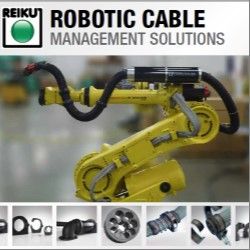
REIKU's Cable Saver™ - The Most Versatile Modular Robotic Cable Management Solution
REIKU's Cable Saver™ Solution eliminates downtime, loss of revenue, expensive cable and hose replacement costs, maintenance labor costs. It's available in three sizes 36, 52 and 70 mm.
All of the robots cables and hoses are protected when routed through the Cable Saver™ corrugated tubing.The Cable Saver™ uses a spring retraction system housed inside the Energy Tube™ to keep this service loop out of harms way in safe location at the rear of the Robot when not required. The Cable Saver™ is a COMPLETE solution for any make or model of robot. It installs quickly-on either side of the robot and has been tested to resist over 15 million repetitive cycles.
REIKU is committed to providing the most modular, effective options for ensuring your robotic components operate without downtime due to cable management.
www.CableSaver.com

